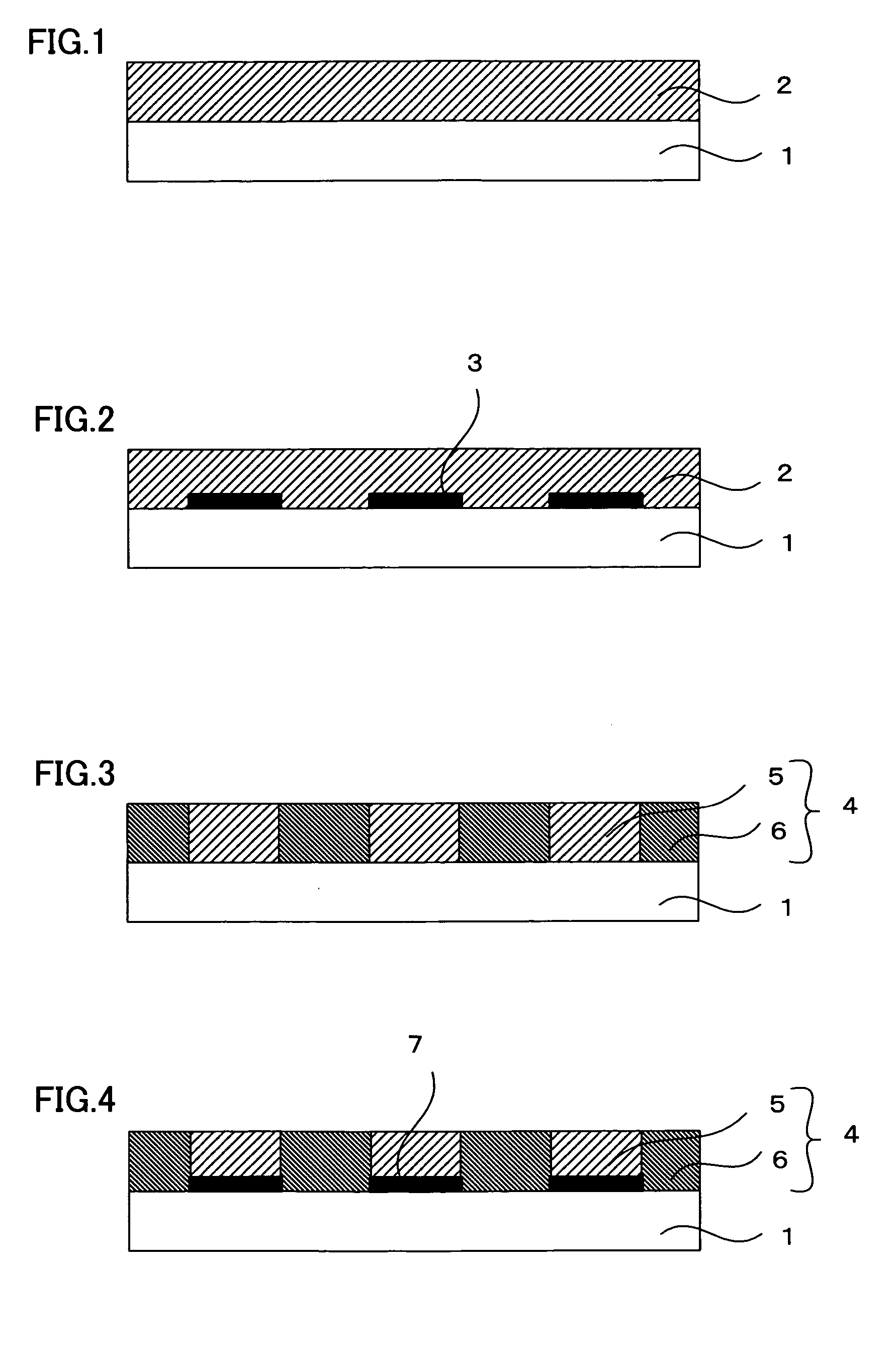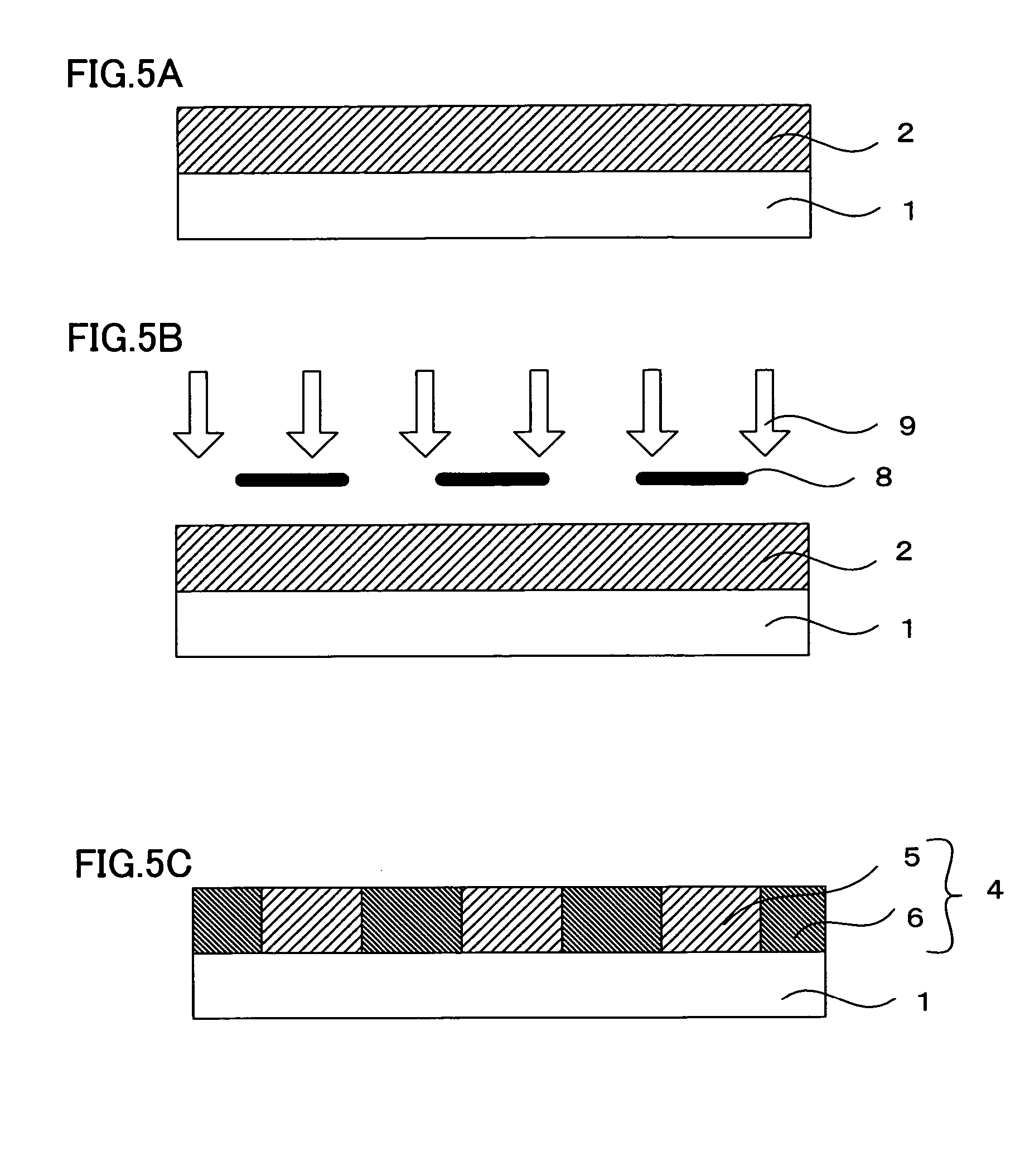Patterning substrate and cell culture substrate
a cell culture substrate and patterning technology, applied in tissue/virus culture apparatus, biochemistry apparatus and processes, enzymes, etc., can solve the problems of inability to survive for a long period under flotation conditions out of organisms, extremely narrow selectivity of cell adhesive materials, adverse effects of culturing cells in some cases, etc., to achieve excellent adhesion with cells, easy to form, and easy to cult
- Summary
- Abstract
- Description
- Claims
- Application Information
AI Technical Summary
Benefits of technology
Problems solved by technology
Method used
Image
Examples
example 1
[0152] (Preparation of Cell Culture Patterning Substrate)
[0153] Blended were 3 g of isopropyl alcohol, 0.4 g of organosilane (trade name: TSL8114, manufactured by GE Toshiba Silicones), 0.04 g of N-(2-aminoethyl)-3-aminopropyl trimethoxysilane (manufactured by Huels America Inc.) and 1.5 g of photocatalyst inorganic coating agent (trade name; ST-K01, manufactured by ISHIHARA SANGYO KAISHA, LTD.), followed by heating at 100° C. for 20 min while stirring.
[0154] This solution was coated by a spin coating method on a quartz glass substrate processed alkali treatment beforehand, the substrate was heated at 150° C. for 10 min to dry, followed by forwarding a hydrolysis and a polycondensation reaction, and thereby a photocatalyst-containing cell adhesive material film substrate in which the photocatalyst is solidly fixed in organo-polysiloxane and that has a film thickness of 0.2 μm was obtained.
[0155] On the substrate, by use of a photomask, UV exposure was carried out for 900 sec at a...
example 2
[0162] Except that instead of a quartz substrate used in example 1, a quartz substrate provided thereon with a striped light-shielding layer having a light-shielding portion of 80 μm and a space portion of 300 μm was used and, without using a photomask and the like, UV light was irradiated from a back surface side of the substrate, similarly to example 1, a cell culture patterning substrate was prepared and cells were cultured.
[0163] In this case too, when the cells were observed by an optical microscope, it was confirmed that cells adhered on the cell culture patterning substrate along a cell adhesion portion.
PUM
 Login to View More
Login to View More Abstract
Description
Claims
Application Information
 Login to View More
Login to View More - R&D
- Intellectual Property
- Life Sciences
- Materials
- Tech Scout
- Unparalleled Data Quality
- Higher Quality Content
- 60% Fewer Hallucinations
Browse by: Latest US Patents, China's latest patents, Technical Efficacy Thesaurus, Application Domain, Technology Topic, Popular Technical Reports.
© 2025 PatSnap. All rights reserved.Legal|Privacy policy|Modern Slavery Act Transparency Statement|Sitemap|About US| Contact US: help@patsnap.com



